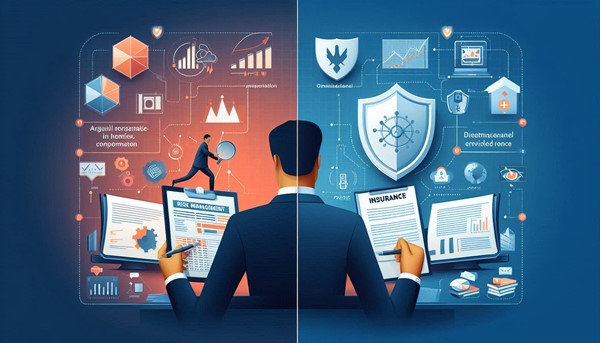Explore how Australian businesses can strengthen resilience by balancing insurance with proactive risk strategies. Practical tips, 2025 trends, and common pitfalls every SME should know.
Key Takeaways
- 74% of Australian SMEs lack formal risk management processes, increasing vulnerability to unforeseen events.
- 12.8% of small businesses and 24% of sole traders have no insurance, leaving them exposed to significant financial risks.
- Cyberattacks cost Australian SMEs an average of $50,000 per incident, highlighting the need for proactive risk strategies.
- Insurance premiums have risen by 16.4% annually in northern Australia, emphasising the importance of risk mitigation to control costs.
- 87% of SMEs using insurance brokers report high satisfaction, valuing their expertise in navigating complex risk landscapes.
Introduction: Navigating the Risk Landscape
In today's dynamic business environment, Australian SMEs face a myriad of challenges—from cyber threats and natural disasters to economic fluctuations. Understanding the distinction between risk management and insurance is crucial. While risk management involves proactive strategies to minimise potential threats, insurance provides a financial safety net when unforeseen events occur. Both are essential pillars in safeguarding your business's longevity and success.
Understanding Risk Management
Risk management is the process of identifying, assessing, and mitigating potential threats to your business operations. It encompasses:
- Risk Identification: Recognising potential internal and external threats.
- Risk Assessment: Evaluating the likelihood and impact of identified risks.
- Risk Mitigation: Implementing strategies to reduce or eliminate risks.
- Monitoring and Review: Continuously assessing the effectiveness of risk strategies.
Benefits for SMEs:
- Operational Continuity: Ensures business processes remain uninterrupted.
- Financial Stability: Reduces unexpected costs associated with risk events.
- Regulatory Compliance: Meets legal obligations and standards.
- Enhanced Reputation: Builds trust with clients and stakeholders.
The Role of Insurance
Insurance serves as a financial buffer, transferring the risk of significant losses to an insurer in exchange for a premium. Common types of insurance for SMEs include:
- Public Liability Insurance: Covers legal costs and compensation claims.
- Professional Indemnity Insurance: Protects against claims of professional negligence.
- Business Interruption Insurance: Compensates for lost income during disruptions.
- Cyber Insurance: Covers losses from cyber incidents.
Importance for SMEs:
- Financial Protection: Shields against substantial financial losses.
- Risk Transfer: Moves the burden of certain risks to the insurer.
- Peace of Mind: Provides confidence to operate without constant fear of potential losses.
Integrating Risk Management and Insurance
While risk management and insurance serve different purposes, integrating both offers comprehensive protection:
- Complementary Functions: Risk management reduces the likelihood of events; insurance mitigates the financial impact if they occur.
- Cost Efficiency: Effective risk management can lead to lower insurance premiums.
- Strategic Planning: Combining both allows for informed decision-making and resource allocation.
Real-world case study: Risk management in action
Case: Regional manufacturing business, VIC
A medium-sized manufacturer in regional Victoria experienced repeated downtime due to power outages and machinery breakdowns. The business had insurance coverage, but claim processing delays and unplanned interruptions were costing thousands in lost revenue.
What they did:
- Introduced a risk register and scored potential business threats.
- Installed a backup power system and created a preventive maintenance schedule.
- Adjusted their insurance policy to include business interruption cover with a faster claims process.
The result:
- Reduced downtime by 38% year-on-year.
- Saved an estimated $95,000 in lost production.
- Strengthened their negotiating position with suppliers due to improved reliability.
Current Trends Impacting Australian SMEs
- Cybersecurity Threats: With an average cost of $50,000 per cyberattack, SMEs must prioritise digital security.
- Natural Disasters: Rising insurance premiums, especially in northern regions, highlight the need for proactive risk strategies.
- Economic Pressures: Increasing insolvency rates and payment defaults necessitate robust financial risk management.
- Underinsurance: A significant portion of SMEs lack adequate insurance coverage, exposing them to potential financial ruin.
FAQs
Q: What's the difference between risk management and insurance?
A: Risk management involves proactive strategies to prevent or minimise risks, while insurance provides financial compensation when certain risks materialise.
Q: Can effective risk management reduce insurance premiums?
A: Yes, insurers often offer lower premiums to businesses that demonstrate robust risk management practices.
Q: Is insurance necessary if I have a strong risk management plan?
A: Absolutely. While risk management reduces the likelihood of incidents, insurance ensures financial protection if unforeseen events occur.
Q: How can I assess the risks specific to my business?
A: Conduct a thorough risk assessment, possibly with the help of a professional advisor, to identify and evaluate potential threats.
Q: What steps can I take to improve my business's risk management?
A: Implement regular risk assessments, train staff on risk awareness, establish clear protocols, and stay updated on industry best practices.
Conclusion: Building a Resilient Future
For Australian SMEs, the synergy between risk management and insurance is not just beneficial—it's essential. By proactively identifying and mitigating risks while ensuring adequate insurance coverage, your business can navigate uncertainties with confidence. Embracing both strategies will not only protect your assets but also position your enterprise for sustainable growth in an ever-evolving market.


